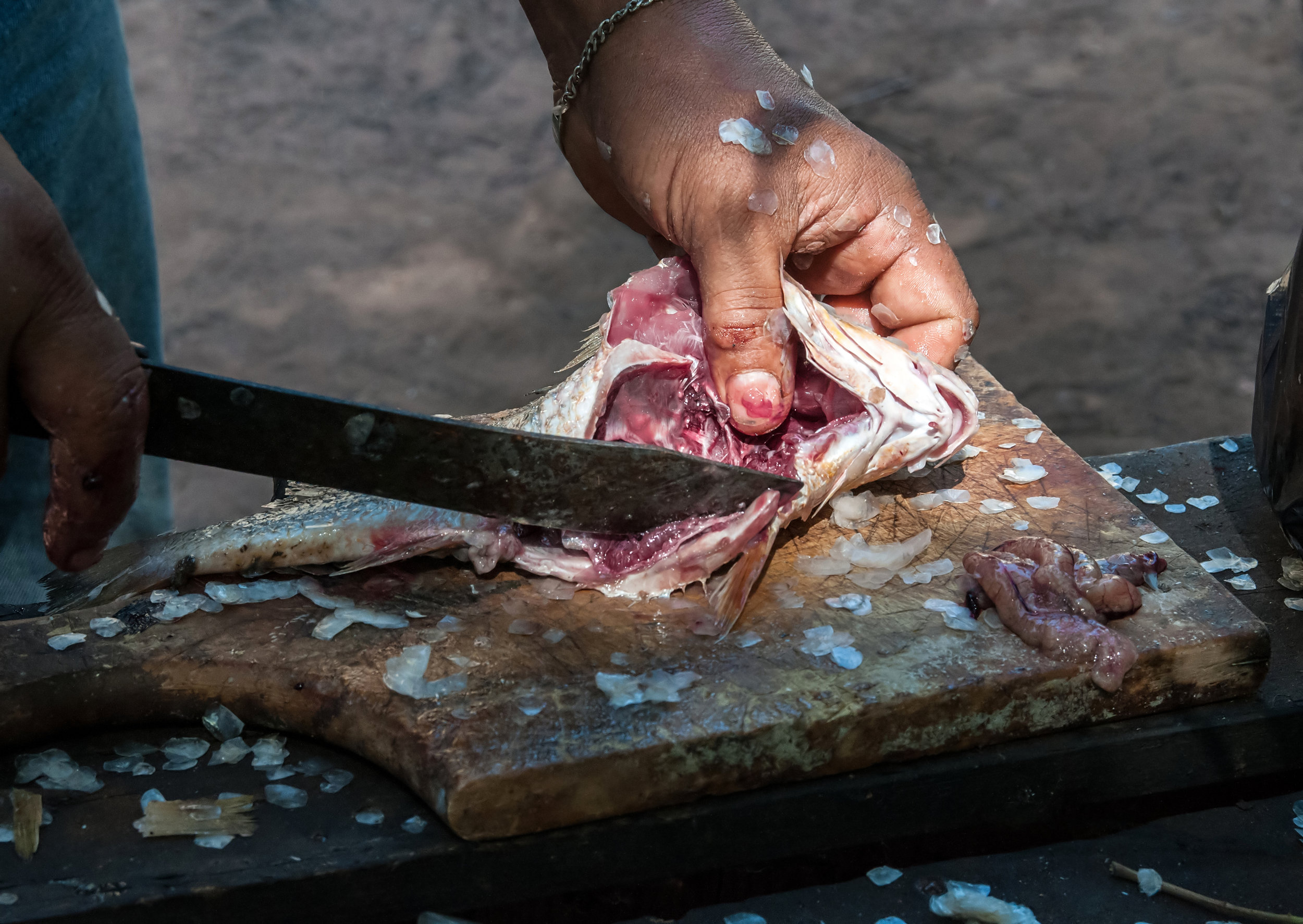Fishing doesn't just end with capturing the fish. Once the fish is sorted and stored on the boat, it is then taken back to shore where it is either processed, or sold directly. This is a crucial step improper handling of seafood can result in their contamination or spoilage, not only reducing the value of the product, but also the quality and potentially making it harmful for consumption.
This is a widespread issue in small-scale fisheries across the globe, particularly those in developing nations. Each fishery will have different reasons for their losses – and indeed options for solutions, but there are some general guidelines that can be followed to keep the quality – and value – of seafood being sold.
Gut that fish!
Tools Needed: Clean knife, clean hands, and clean surfaces
When a fish dies, two things happen to the guts and organs. First, they degrade very quickly, which can taint the quality of the flesh. Second, worms that are in the gut can migrate to the flesh. Ideally gutting of a fish (and in the case of some white fish, bleeding) should take place as soon after capture as possible, but on small vessels used in many small-scale fisheries this may not be possible.
Since the fish is being cut, hygiene is of the upmost importance – make sure everything is as clean as possible, and keep the guts away from the fish. An exception to gutting may be very small fish that immediately go to drying or smoking. Here, speed is of the essence if degradation is to be minimised. If the fish is to be washed, it is important that it is done so in clean fresh water and not seawater as bacteria and viruses in the ocean can easily contaminate the fish prior to drying.
Gutting fish in Isla Margarita. Credit The Photographer/Wikimedia (CC0 1.0)
Cool and clean
Tools Needed: Insulated box, or table and awning/umbrella or similar. Ice if available.
Whether the fish is being sold as it is, or waiting further processing, it is important to keep the fish out of the sun – and ideally away from heat to slow degradation of the flesh. Refrigeration is the ideal solution, but not always practical or available. Insulated containers are the next best solution. If ice is available, the box should be packed with it, and a lid is important to keep both the sun and pests away from the fish. Insulating boxes made from HD-polyethylene are preferable, but can be expensive. Wooden boxes can be constructed as an alternative, preferably with polystyrene lining to provide insulation.
If polystyrene is unavailable, other options include constructing an inner casing, with a cavity filled with sawdust, dried grasses, or even dried seaweed – though this is nowhere near as good as using ice. Any wood that is in contact with the fish needs to be treated with a non-toxic, food-safe solution to make it waterproof and easier to clean. The other advantage of a box is that it helps keeps pests and scavengers at bay. If none of these options are available, placing the fish on a table, and shaded with an umbrella or similar is better than having it on the floor.
Chorkor’s womens guide to smoking fish
Tools Needed: Clay, wire mesh, wood (preferably hard), spade, oil.
Smoking fish is a very popular method of preservation in regions where heat rapidly deteriorates fish, and where fish may need to be stored for a long period of time. A number of methods are used to smoke fish, but among those most recommended is one created by local women in Chorkor, Ghana, with the assistance of the FAO and the Food Research Institute (Accra). Essentially the chorkor oven is a rectangular, clay oven, with wire-mesh grills and as such, easy to construct. First a pit is dug into the grounds for the foundation, and then the clay walls built, normally in three stages. Arches are cut into the lower section of the walls which is where the fire is built. The trays, which sit on top of the clay oven, are constructed out of a wooded frame which surrounds wire mesh. Hard wood is preferred as it is more resistant to heat and pests.
The beauty of the chorkor oven is that it can deal with a higher capacity of fish than other smoking methods, reduces the moisture content of the fish more rapidly and evenly, uses less fuel, and results in less smoke entering operator’s eyes and lungs, as well as reducing the risk of being burned. Ideally the oven should face the direction of the prevailing wind to help disperse smoke and regulate the fire. Some maintenance is required. They clay may need to be patched from time to time if it cracks, and ideally the outside recoated at the bringing of every season. Racks should be oiled to prevent rust.
This story featured on The Fish Site.
